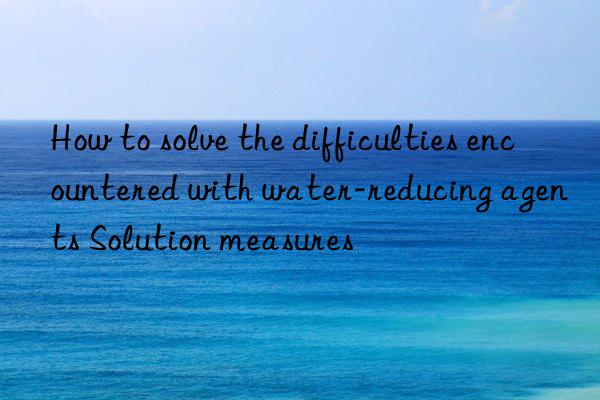
As a new generation of water reducing agent, water reducing agent is widely used in concrete projects. The use of many acid and alkali agents will inevitably bring about corresponding positive and negative effects. Just like water reducing agent has many advantages, but There are still some problems that are complicated and difficult to solve during use. Therefore, there are some things that should attract our attention when using it. The editor of Qingdao Dingchang New Materials Co., Ltd. has summarized some common problems and solutions. I hope it will be helpful to you.
When any problems arise in concrete projects, people first make demands to the admixture manufacturers. However, due to the limitations of their position in the industrial chain and their own professional habits, admixture manufacturers also habitually believe that by adjusting the admixture Agent formulas and usage methods can solve almost all problems, but often only achieve twice the result with twice the result. In fact, most fluctuations in the application effects of admixtures are directly related to fluctuations in the physical properties of concrete raw materials. The author believes that ensuring the stable supply of concrete raw materials is the key to ensuring concrete quality.
1. The problem of mud content in sand
When the mud content of sand is high, the water reducing rate of high-efficiency water-reducing agent is significantly reduced, and the change is also small when the dosage is increased. Not obvious. Solution: Use this batch of sand for low-grade ordinary concrete; strictly control the mud content of the sand, requiring the mud content to be at least less than 2%.
2. Sand and high-efficiency water-reducing admixture are incompatible
When the gradation, mud content, and mud content of the sand all meet the requirements, they are not compatible with the high-efficiency water-reducing admixture. Incompatible, the sand has certain chemical components that conflict with the superplasticizer components, and the mixed concrete has no fluidity. Solution: For each batch of sand entering the site, if the physical indicators are qualified, retest the concrete construction mix ratio and remove the insoluble sand from the site.
3. The setting time is too long or too short
During the construction process of concrete, sometimes the setting time is inconsistent with the time requirements provided by the admixture manufacturer. The reason may be that the detection methods of both parties are different and the ambient temperature is different, or it is caused by sudden changes in temperature (daily temperature difference﹥15℃), the freshness of the cement, and changes in the concrete mix ratio.
Based on the above conditions, concrete mix ratio and other factors, combined with the data of concrete tests, the required setting time requirements are proposed to the admixture manufacturers. Manufacturers make corresponding adjustments based on user opinions and strive to avoid errors.
4. Concrete slump loss is fast
Solution: The water reducing agent manufacturer adjusts the slump by adding a slump retaining agent and then using on-site raw materials to conduct a mix ratio retest. losses and meet construction requirements.
5. Concrete bleeding
On a rainy day, C50 concrete was poured and the concrete was in good condition after being unloaded from the tanker. However, after the concrete was vibrated, there was bleeding and segregation. Solution: Reduce water consumption, lengthen the mixing time, reduce the dosage by 0.1%, the concrete will no longer ooze slurry after vibration, and the compressive strength of the concrete specimens will reach the design strength after 28 days of standard maintenance.
</p



 微信扫一扫打赏
微信扫一扫打赏
